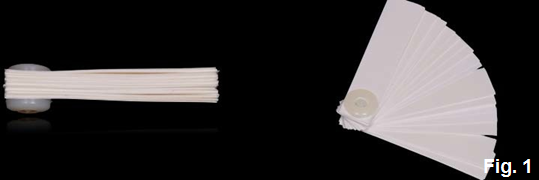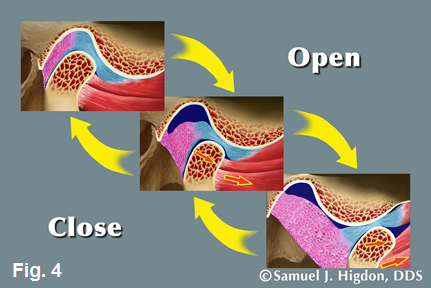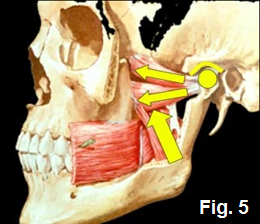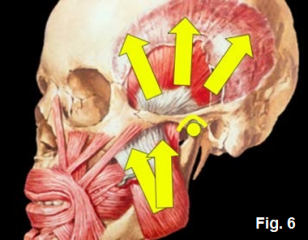Using a Leaf Gauge With Intention: Part I

Isn’t it amazing how a bunch of skinny pieces of plastic that provide so much useful, if not critical, information in everyday practice, can also create just enough perplexity that we don’t use them at all? Or is it that we just don’t use them for each indication with focused intention because the indications are all jumbled in our brain? Or could it be that we think we can use it one time and gather information for all of the indications? I’m going to suggest that even though it is one tool that always looks the same, that every time you use the leaf gauge, you view it as a separate tool. Ironically, the ease and convenience might actually work against us! Crazy, right? I know. It would almost be easier if we actually had four different tools, one for each indication.
4 common uses for the leaf gaug
- Loading the TMJ
- Deprogramming the lateral pterygoid
- Identifying first point of contact in centric relation
- Obtaining centric relation bite records
This article will address the first two uses. A subsequent article will review the final two uses. A third article will summarize and clarify the confusion created in the first two. Just kidding – I think. Each indication requires a slightly different mindset and even slight variation of use. It can be simplified by intentionally focusing on the following for each:
- How many leafs are needed to start and why?
- What signs and symptoms are being evaluated?
- What is the intended goal or outcome?
Loading the TMJ
Using the Leaf Gauge (aka the Joint Loader Tool)


Think like an orthopedist or physical therapist. Can the joint be loaded and held comfortably? If a healthy piece of cartilage is properly positioned between the ball and socket, and the ball is properly positioned in the socket, a very strong force or heavy load should be able to be comfortably applied and held. (Fig. 2) Using a joint loader tool and the muscles of mastication, a tripod is formed – made up of the two joints and the anterior teeth – creating a fulcrum to load the joints. (Fig. 3)
- How many leafs are needed to start? Enough to keep the back teeth apart, creating a fairly smooth and mostly horizontal path, while ensuring the opening is still within the arc of closure (rotation). Too few leafs feels flimsy and can create a definite vertical component, especially with a deep overbite. Too many feels bulky and could be too open, forcing the condyle down the eminence, beyond rotation (translation). (Fig. 4) It’s as simple as, “Forward, back, lightly squeeze, like you are trying to bite on your back teeth.”
- What signs and symptoms are being evaluated? Is there tension, tenderness, or discomfort, specifically in front of the ear or the surrounding area? If so, is it the joint, muscles (most often the lateral pterygoid) or both?
- What is the intended goal or outcome? Evaluate for positive or negative load tests; is there pain? If there is no pain or discomfort, the documentation should be “negative load test,” meaning there were no positive pain findings, suggesting a current “healthy joint.” Or, in simple terms, a joint that at this time has adapted well within the masticatory system and is therefore part of a safer patient, with more predictable treatment outcomes than would a positive load test. If it is positive, the documentation is “positive load test,” meaning the patient reported some discomfort. There are only two reasons for tension, tenderness, or discomfort when the joint is loaded: Internal joint derangement or lack of release of the lateral pterygoid. The leaf gauge is used to load the TMJ and determine if any symptoms are present. That’s it.
Deprogramming the Lateral Pterygoid
Using the Leaf Gauge (aka The Muscle Releaser Tool)

Think like a detective. You have a clue (a coded message) and half of a treasure map. By using the muscle releaser tool to decode the message, you can see the path to retrieve the other half of the map.
Warning: After decoding, you might not like where the map leads you.
One route will lead you, somewhat smoothly, to the hidden treasure – centric relation/fully-seated condylar position. The other will take you down a potentially dangerous road – questionable compensatory habits and joint position. The good news: with this new information, you have the option to stay home! You don’t have to treat the patient. Leaving the treasure for someone else might be better than starting down the road and running into hidden mines and dangerous sink-holes. Often, dentists are scared off by what initially seems like complicated patients. Using this tool properly might help alleviate some of that fear and keep some patients in the practice with less anxiety. Pretty cool tool, right? Using a muscle releaser tool to keep the back teeth apart and give the teeth a smooth platform on which to travel will help decipher the message. It is not uncommon for the lateral pterygoid to work almost constantly, keeping the mandible down and forward. (Fig. 5) Most often, this is compensatory in nature, in an attempt to avoid upper and lower teeth touching unevenly when the condyle is in a fully-seated position. So, after many years of work, it might initially feel uncomfortable when we try to assist the release of the muscle or ask it to let go. By keeping the back teeth apart for an extended time and sliding back and forth on the muscle releaser tool, the lateral pterygoid is learning that it does not have to work to avoid the unpleasant contact. It can take a break.
- How many leafs are needed to start? It really doesn’t matter, as long as no teeth are touching. It might be easier to slide back and forth on the plastic if there are enough leafs for a stable feeling, as opposed to a flimsy feeling of only a few leafs.
- What signs and symptoms are being evaluated? Initially? None. Just use the tool. It’s being used to release the muscle – that’s all. Keep the back teeth apart, slide forward, backward and lightly squeeze a few times. Maybe even many times over several minutes to help the brain to realize that the muscle doesn’t have any reason to pull forward anymore because there’s nothing to avoid.

- What is the intended goal or outcome? To assist the lateral pterygoid in releasing and to find out if it is easy to release. That’s all. Keep it simple. The muscle releasing tool is used to trick the lateral pterygoid into shutting down for a few minutes. If we convince the lateral pterygoid into thinking it doesn’t have to work, we are also allowing the muscles of mastication to assist the condyle into its physiologic position. (Fig. 6) In doing so, we can use the decoded message to determine the relative ease or difficulty releasing the muscle. If any tension, tenderness, or discomfort that was present when the joint was loaded (with the joint loading tool) has decreased, there is evidence that the road to the treasure map (centric relation) will be a smooth and scenic one.
Although these two tools may look the same, they have very different roles and provide us with very different information. In subsequent articles, I will review the two other tools that also look eerily similar to these and provide an overview of how the information can be used collectively.
VIRTUAL SEMINARS
The Campus CE Experience
– Online, Anywhere
Spear Virtual Seminars give you versatility to refine your clinical skills following the same lessons that you would at the Spear Campus in Scottsdale — but from anywhere, as a safe online alternative to large-attendance campus events. Ask an advisor how your practice can take advantage of this new CE option.

By: Kevin Kwiecien
Date: February 26, 2015
Featured Digest articles
Insights and advice from Spear Faculty and industry experts


